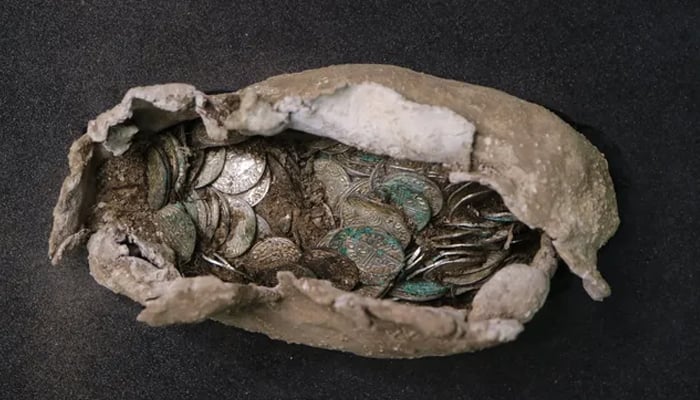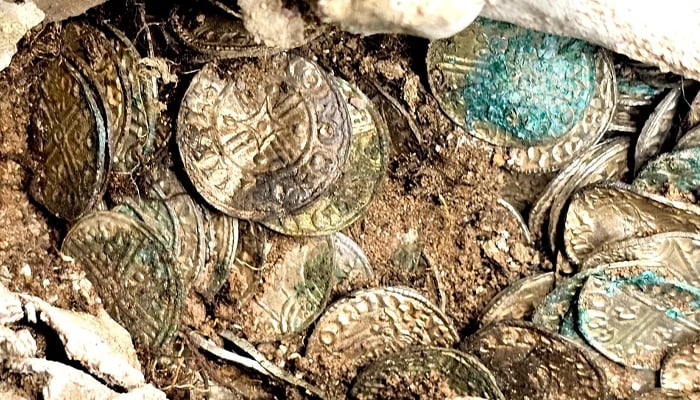Hoard of 11th century coins unearthed in England in mint condition
"I was shaking when I first unearthed it," says archaeologists on hoard of 321 Anglo-Saxon coins
January 12, 2025

Archaeologists have unearthed a hoard of 321 silver coins in mint condition wrapped up in cloth and lead, suggesting the owner might have been trying to protect them to avoid them being confiscated.
The coins were found on the Suffolk coast in eastern England, where a new nuclear power plant named Sizewell C is under construction since 2024, as per Live Science.
"I was shaking when I first unearthed it," Andrew Pegg, an Oxford Cotswold Archaeology (OCA) archaeologist, said in a statement.
"The information we are learning from it is stunning and I'm so proud to have added to the history of my own part of Suffolk," he added.
Some of the coins in the hoard are from small, rural mints and quite rare, dating between 1036 to 1044, coinciding with the era of Anglo-Saxon king Edward the Confessor.
A dark and troublesome time when the king exiled and confiscated the properties of several elites who had lost favour of the king.
Value of the coin hoard amounts to 320 pence in the 11th century and would have been a sizable sum for most people at the time. A coin specialist with OCA Alexander Bliss says the amount would have been enough to buy 16 cows.

"Perhaps the owner of the hoard was concerned about the new regime [or] political situation and wider social instability, taking steps to hide their wealth," Bliss told Live Science in an email.
"There are now three hoards from this period (1042 to 1044) known across England, which strengthens the idea that the first years of Edward's reign were not calm," he added.
Bliss also told that Anglo-Saxon coins are relatively rare and the newly found hoard stands out because archaeologists excavated in its original context with the coins being in a textile pouch.
"In this instance, preserving the pouch was very important because it forms part of the overall 'object' as one element of containment for the coins," Bliss said.
"We also wanted to understand whether the lead was just a piece of sheet or had been detached from a larger object," he said.
The pouch was opened in a laboratory by archaeologists and determined that the lead wrapping was manufactured from folded sheet, saying that the owner knew how to take care of the coins and used a case they knew to be sturdy.
"Perhaps they were unable to access one which was small enough, or alternatively perhaps they wanted to try and disguise the valuable contents," he said.











